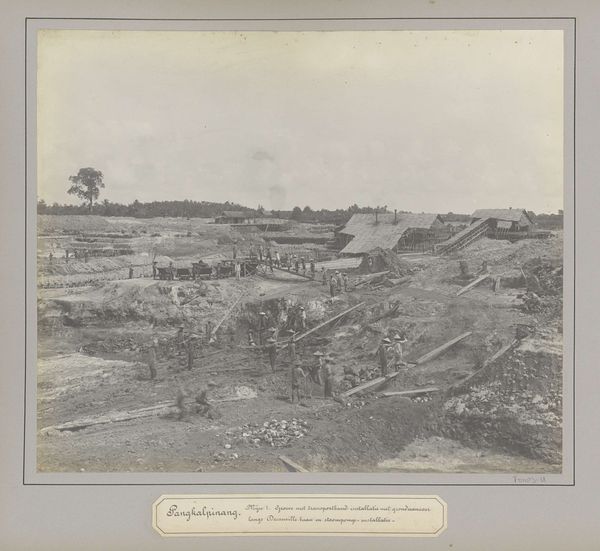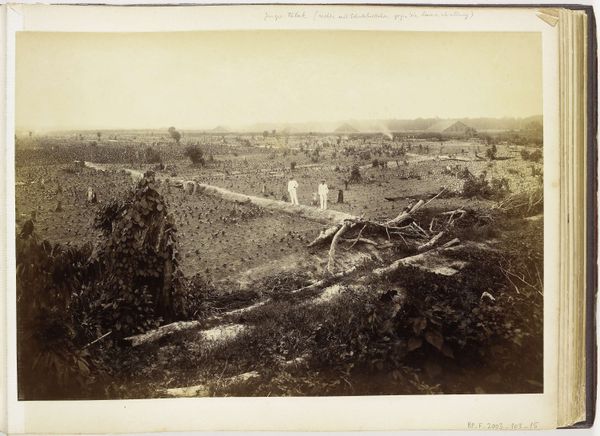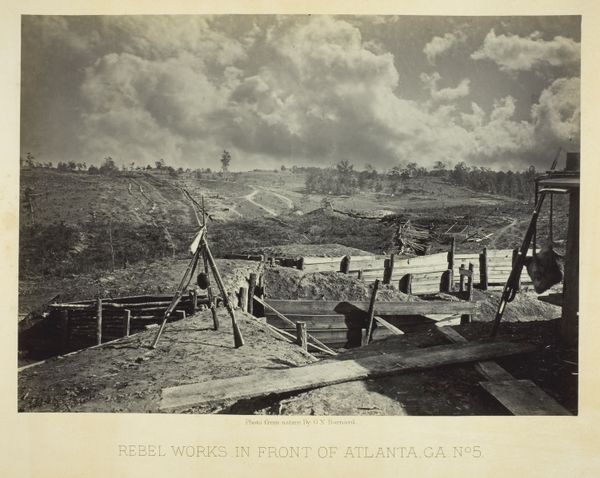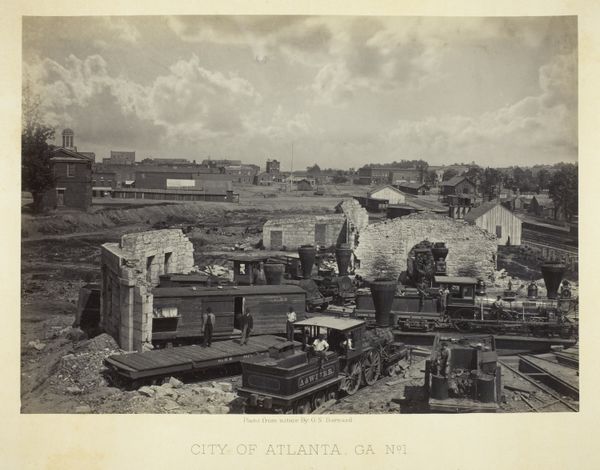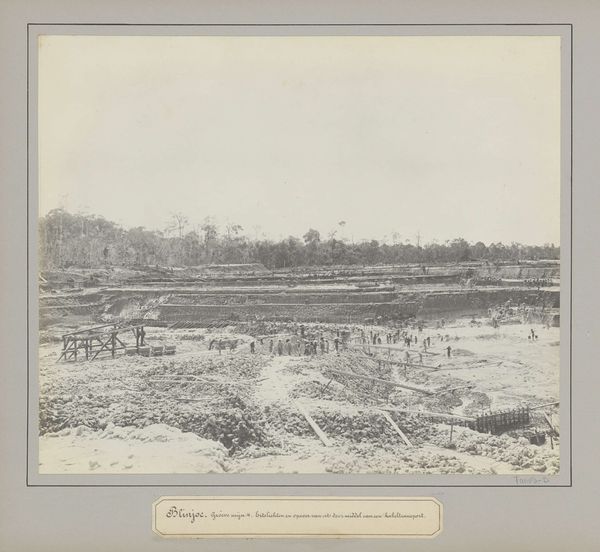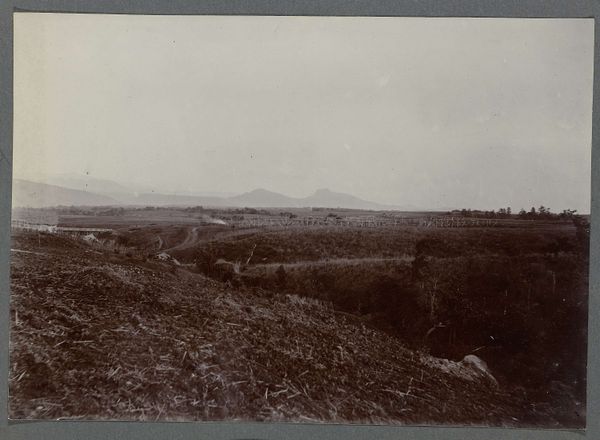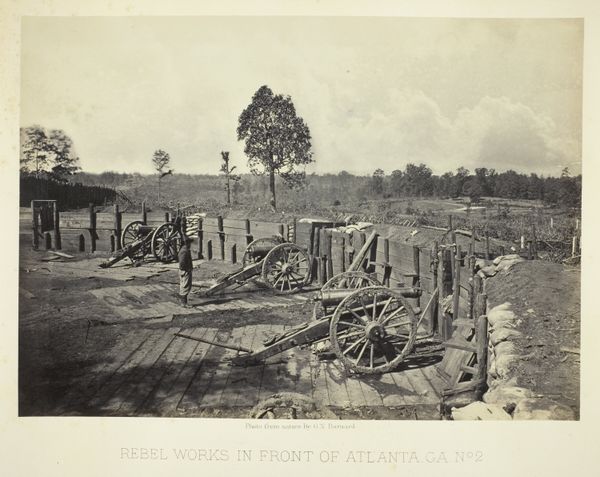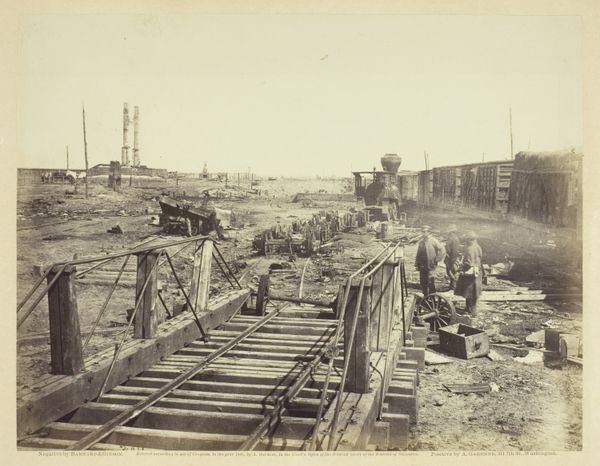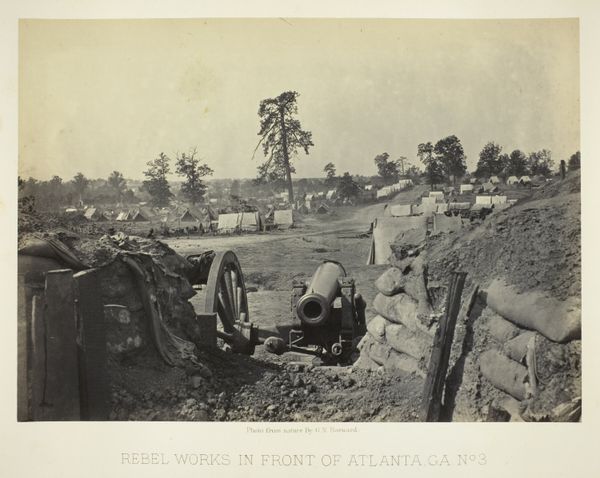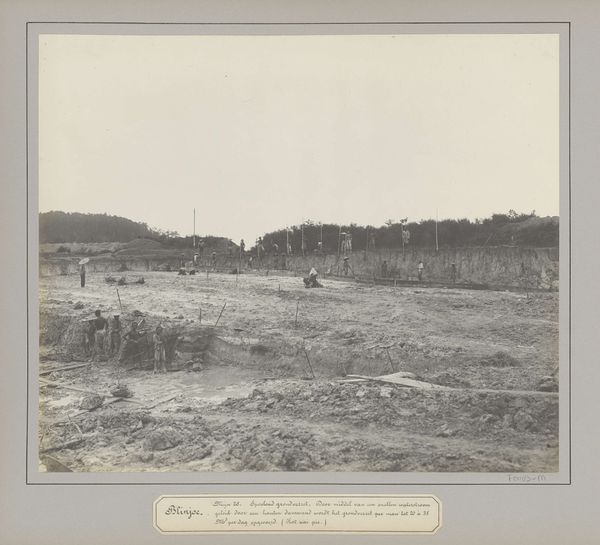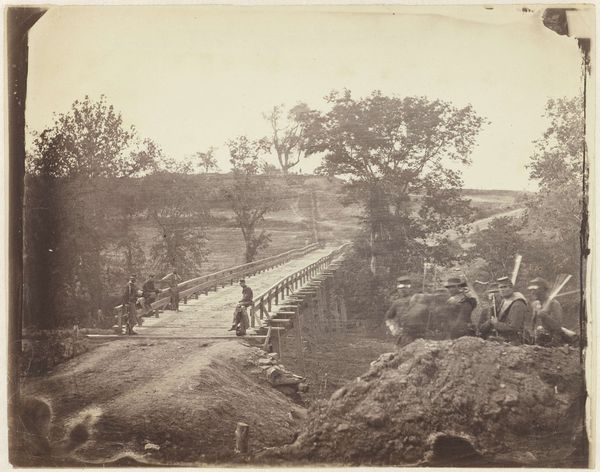
silver, print, photography, gelatin-silver-print, albumen-print
#
photorealism
#
16_19th-century
#
silver
#
muted colour palette
# print
#
landscape
#
photography
#
gelatin-silver-print
#
albumen-print
Dimensions: 24.9 × 36.1 cm (image/paper); 41 × 50.9 cm (album page)
Copyright: Public Domain
Curator: Looking at this photograph, the overwhelming feeling is one of somber stillness, a kind of heavy quiet after a storm. Editor: Indeed. We are observing "South Bank of the Chattahoochie, Ga." It's a gelatin-silver print, or possibly an albumen print given its age, created in 1866 by George N. Barnard. A haunting document of the American Civil War’s aftermath. Curator: Haunting is the precise word. Look at the ravaged earth in the foreground and the destroyed infrastructure behind it. It speaks to the violence that happened, not in a glorified battlefield manner, but in the slow, grinding way war eats into the landscape. We need to remember that these serene or even “pretty” ruined landscapes often obscure stories of displacement, disenfranchisement, and racial injustice. Editor: Exactly. Barnard worked for the Union Army as an official photographer, documenting the damage inflicted upon Confederate territory. This image serves as potent evidence, both a topographical record and a stark reminder of the human cost of conflict. Consider, also, how photography at this moment became entangled with power structures, reinforcing the victor’s narrative. The act of documenting destruction could, in itself, be an act of dominance. Curator: And whose stories are silenced in these images? While Barnard documented visible destruction, what about the lived experiences of enslaved people newly freed, of those whose homes were near this location? What challenges of social reconstruction, environmental remediation and even reconciliation occurred at this location? The lack of figures emphasizes that absence. Editor: Certainly. These early photographs invite crucial questions regarding perspective, agency, and the very nature of historical record. They aren’t neutral documents; they are carefully constructed representations of specific moments and agendas. This photograph, taken near the end of the Civil War, portrays a very specific version of damage and thus a certain agenda and point of view. Curator: Engaging with works like "South Bank of the Chattahoochie, Ga.", and considering this photograph's difficult place in American history, can create an environment for reckoning with the lasting legacies of violence. Editor: Absolutely. It serves as a powerful entry point for a much larger conversation about conflict, reconstruction, and the complex narratives embedded within seemingly objective visual records.
Comments
No comments
Be the first to comment and join the conversation on the ultimate creative platform.
